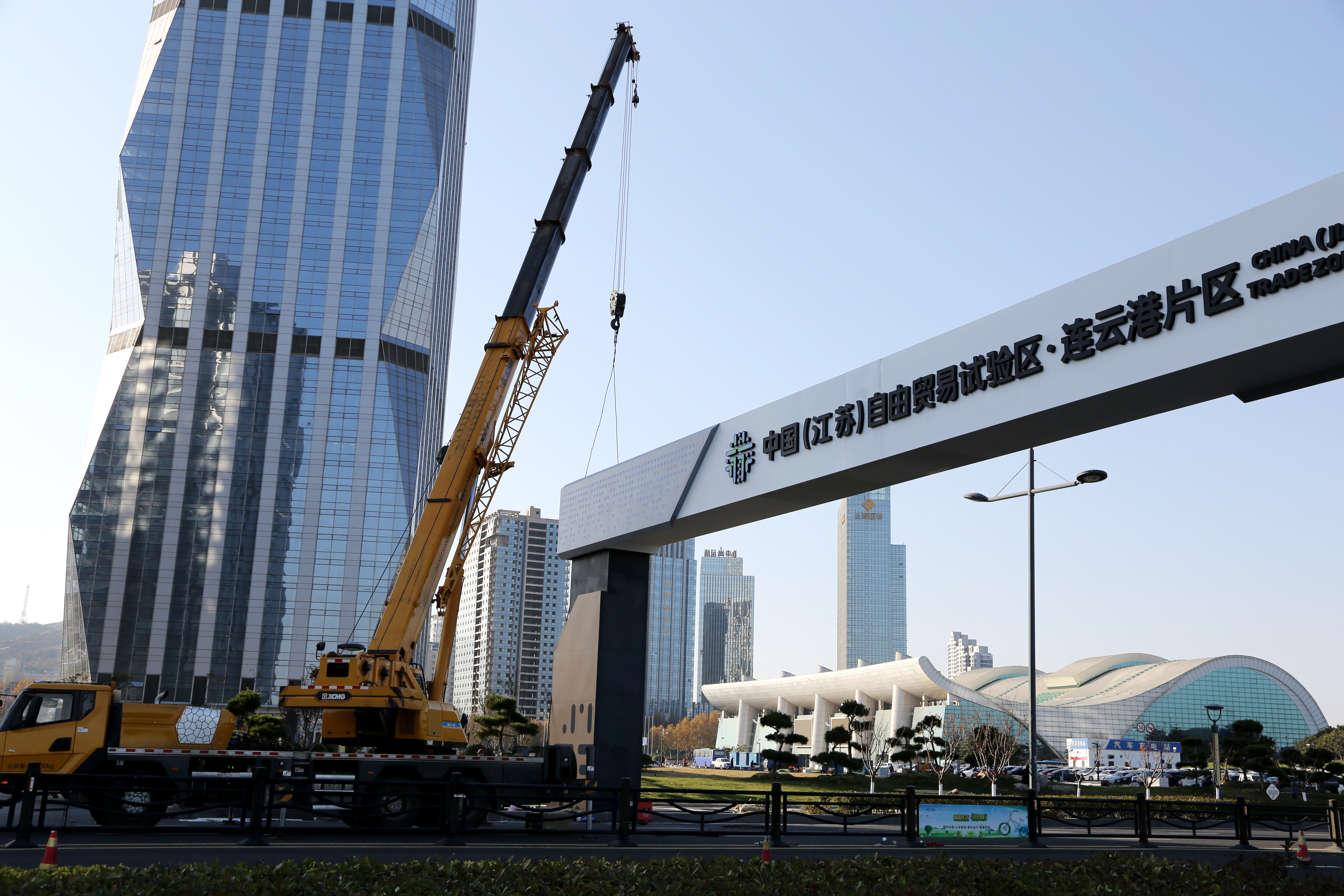Jiangsu Pilot Free Trade Zone Lianyungang Area on November 28, 2019 in Jiangsu Province of China.
Wang Chun | VCG | Getty Images
China’s fourth-quarter economic growth may have been “the weakest of 2019” — but it still showed an improvement compared to the previous quarter and to the same period a year ago, a business survey released on Thursday showed.
Manufacturing and services saw the strongest revenue improvement compared to the the previous quarter, though profit was “muted,” according to research firm China Beige Book’s quarterly review of the world’s second-largest economy, which was based on a survey of more than 3,300 Chinese businesses.
Three important results emerged from the survey.
First, there are signs that cash flows have deteriorated quickly. “It is easy to discount a seemingly unceasing trend of worsening cash flow, since it in some ways is a feature of the system. But even by Chinese standards, Q4 late payables and deliverables soared—to the worst levels we’ve recorded,” the report said.
Secondly, new orders continue to fall even though companies are reporting higher revenue in the fourth quarter. “Demand may not hold up,” the report said, adding that “firms may not yet have understood the message their customers are sending.”
Finally, the economy saw record levels of corporate borrowing in the fourth quarter, the survey showed. “Loan applications nationally shot to an all-time high, while rejections sank to an all-time low,” according to the China Beige Book. “For the first time since 2012 we saw each of our four core sectors—Manufacturing, Retail, Services, and Property—report over 30% of firms borrowing.”
Shadow banking looms
The rise in business loans is in part due to the comeback of shadow financing, according to the survey.
Shadow banking refers to unregulated lending activities that often present higher risks as they are subject to less regulatory oversight. China Beige Book’s data showed that the proportion of loans from non-bank lenders have increased to nearly 40% in the fourth quarter of 2019, compared to 29% in the same period in 2013.
China’s smaller private firms have contributed to the country’s economic growth but traditionally, they have had a more difficult time getting loans than the larger, state-owned corporations, leading many to turn to shadow banking.
“Firms say shadow bankers are paying little heed to official data refusing to acknowledge their resurgence, accounting for roughly two-fifths of loans for a third straight quarter,” the report showed. “And the bond market appears just as agreeable, with issuance rising for a record sixth straight quarter.”
“We’ve shown in the past that the economy is not even credit-constrained, much less starved. That’s now become an understatement,” the China Beige Book said.
Proportion of loans from bank and non-bank lenders
Source: China Beige Book Analytics Platform
“This is the third consecutive quarter where shadow banking represented roughly 2 out of every 5 loans made. This may seem surprising considering that Beijing continues to maintain that shadow banks have largely been erased from the equation since 2016-17,” said Shehzad Qazi, managing director at China Beige Book.
“Borrowing rose in every sector this quarter outside of manufacturing (where credit access had been rising for 5 consecutive quarters through Q3-19). But the distinctive feature in Q4 was a spike in borrowing — both in the loan and bond markets — in parts of the economy where cash flow tightened significantly,” Qazi told CNBC via email.
Trade war effect
Other concerns include oversupply, and rising wages that could eat into profits.
China’s manufacturing was “surprisingly solid” despite a protracted trade war with the U.S., the survey showed. The world’s two largest economies have been embroiled in a trade dispute that has seen both sides levy additional tariffs on billions of dollars worth of goods from each other.
The phase one deal is helpful mostly in that it ensures the headwinds for Beijing aren’t likely to get materially worse over the next year.
Shehzad Qazi
managing director at China Beige Book
China saw overall export orders fall in the second half of 2019, as American tariffs on Chinese goods took effect. However, the survey showed that manufacturing revenue in the fourth quarter still “powered ahead” while hiring and profits remained firm.
“Manufacturers may have passed the bulk of the oversupply problem to retailers, as their inventory accumulation slowed in both Q3 and Q4,” the report said, pointing out that the survey showed that 3 out of 5 respondents said their inventories had increased.
“This is a potentially crucial result because it implies consumption’s heralded contribution to growth is being exaggerated by the chronic problem of oversupply. In this case, retailers are hiding oversupply at their own cost,” the report said.
Qazi added that while the consumer sector has been “quite solid,” if all other sectors “are fading,” even a strong consumer sector will become “a major risk for 2020.”
With the U.S. and China entering a trade truce this December, Qazi said, “the phase one deal is helpful mostly in that it ensures the headwinds for Beijing aren’t likely to get materially worse over the next year.”
